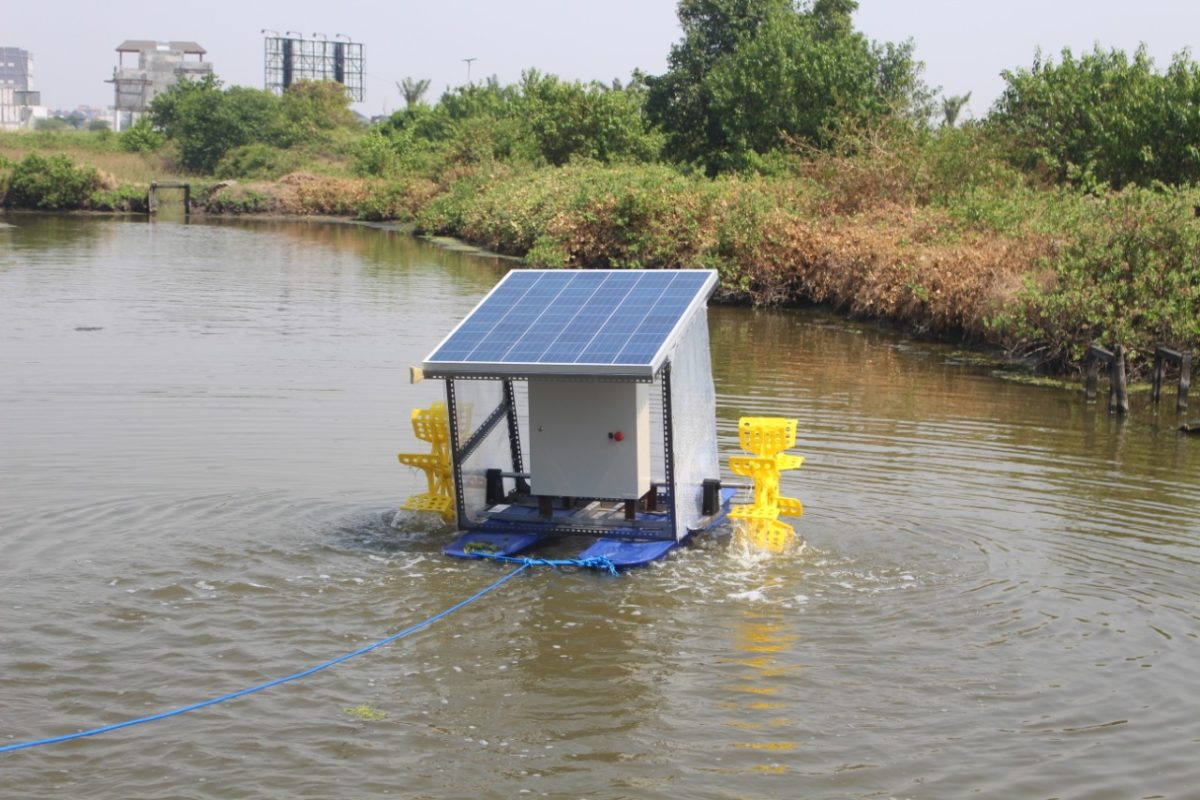Researchers from the Institut Teknologi Sepuluh Nopember (ITS) in Indonesia have developed an aerator for shrimp farming that is powered by photovoltaic energy.
The aerator consists of a 200 W solar panel, an aerator frame, an eight-leaf windmill for paddling water and restoring oxygen levels, a DC motor PG45 RPM working as a driving wheel, a buoy as a component lifter, and a box panel as a protective tool that uses the electricity network.
The motor is able to rotate the wheel automatically to produce air bubbles and work at certain hours during day and night. “When the engine is running, the power from the motor is drawn from the battery and passes through the controller,” the scientists explained. “When the charging voltage in the battery has reached a whole state, the controller will stop the electric current from entering the battery to prevent overcharging. So the battery life will be much longer lasting.” According to the researchers, the expected lifetime of the battery may reach up to 15 years.
The scientists are currently planning to improve the aerator with unspecified Internet of Things (IoT) technologies. “So that farmers can control and monitor the aerator from home using an integrated smartphone,” they stated.
Another research group in Malaysia recently suggested using floating PV coupled with storage to power energy-intensive aeration systems used in aquaculture projects. According to its estimates, the solar-plus-storage system is the most technically and economically feasible option among the other configurations for both day- and night-aeration scenarios
This content is protected by copyright and may not be reused. If you want to cooperate with us and would like to reuse some of our content, please contact: editors@pv-magazine.com.




1 comment
By submitting this form you agree to pv magazine using your data for the purposes of publishing your comment.
Your personal data will only be disclosed or otherwise transmitted to third parties for the purposes of spam filtering or if this is necessary for technical maintenance of the website. Any other transfer to third parties will not take place unless this is justified on the basis of applicable data protection regulations or if pv magazine is legally obliged to do so.
You may revoke this consent at any time with effect for the future, in which case your personal data will be deleted immediately. Otherwise, your data will be deleted if pv magazine has processed your request or the purpose of data storage is fulfilled.
Further information on data privacy can be found in our Data Protection Policy.